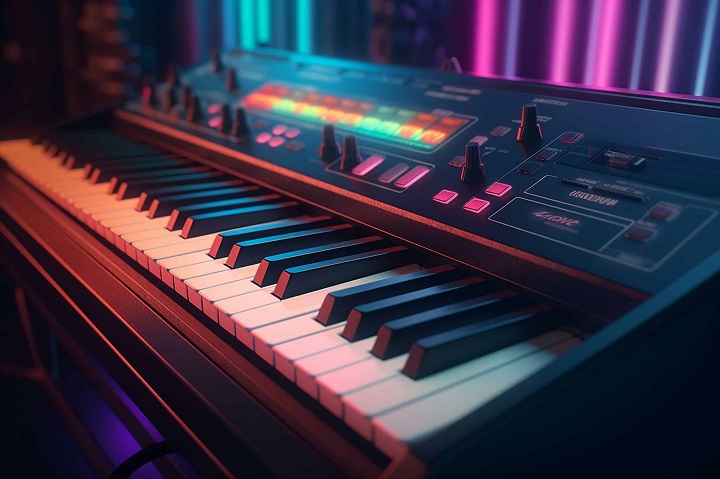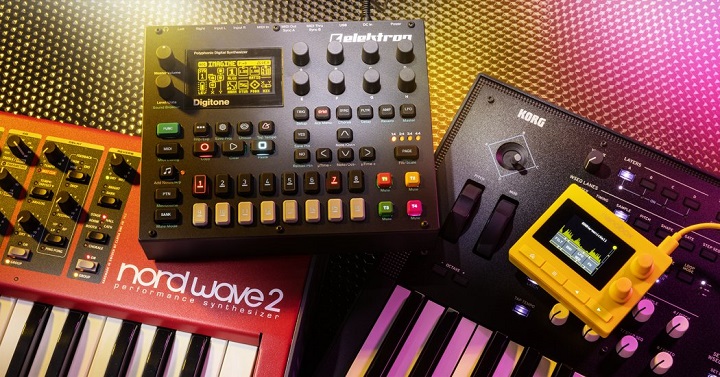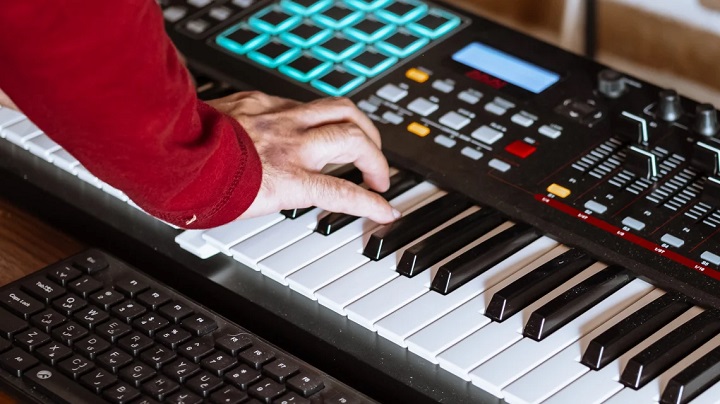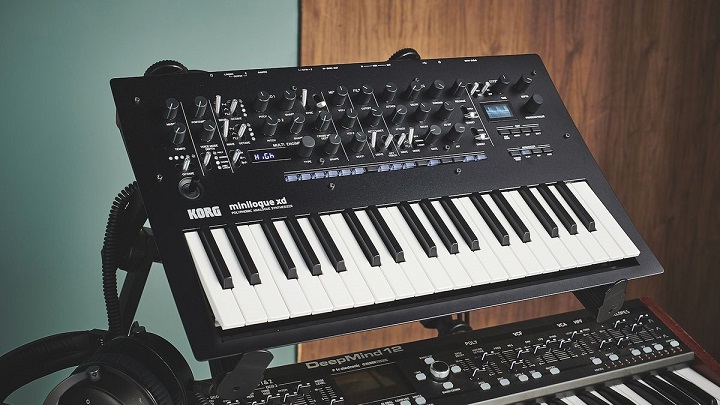Beginner’s Guide to Buying a First Hardware Synthesizer
So, maybe you’re working tirelessly, trying to learn the basics of writing lyrics and melodies, or perhaps you’re looking for the best keys to add to your music studio equipment. All of which will naturally lead you to view countless YouTube videos of demos and reviews and ponder “Should I purchase a hardware synthesizer?”. However, before clicking the purchase option for anything with knobs and adjustments, it’s probably best to consider what you truly need.
What exactly is a synthesizer?
Since the word originated almost seven decades ago, the definition has expanded, but it’s still fundamentally an electronic instrument that generates or plays back waveforms to produce audio, often musically and typically with waveforms. It differs from a piano, which is purely acoustic and employs physical components to generate sound.
Keyboards are intended for musicians who wish to play with a vast array of noises, samples, and automated accompaniments in every conceivable style. That’s why buying a synthesizer is better suited for musicians who want to create their own sounds or fine-tune existing samples.

Different Types of Synthesis
Before purchasing a synth, it can be useful to determine the type of synthesis you desire. Generally speaking, synthesis can be divided into two halves: analogue and digital. Analogue is predominantly subtractive, with the output of an oscillator travelling through a filter. The definitive subtractive synths include early Moog designs, the Prophet family from Sequential, and the Junos and Jupiters from Roland.
From virtual analogue to FM (frequency modulation) to physical modelling, the digital aspect is extraordinarily diverse. The one you require may depend on the genre you choose. A subtractive analogue synth is the best method to learn the fundamentals of synthesis if you’re just getting started.

Additional Features
A synthesizer contains more than just notes. Many have valuable and entertaining features that enhance the playing experience. Sequencers and effects ranging from reverb and delay to distortion and chorus are fairly common in contemporary synthesisers as are sequencers. You may also encounter features such as chord memory, randomisation for programming assistance, and patch points that transform the musical instrument into a semi-modular sound design machine.
Frequently, these embellishments are more than just accessories; they are integral to the instrument’s character. They can also increase the total price. However, their significance to you depends on your requirements.

Size and Format
Does your studio have sufficient space for a large instrument? Before purchasing, you should consider the format of the instrument. Even within these constraints, there are a variety of configurations.
The first is the extent of the keyboard. A full-size keyboard has 88 keys and eight octaves. However, it is uncommon for a synth to have a complete keyboard like a piano. They can be as small as a few octaves or as large as 44 keys on many synthesizers. Key size can also vary. Many have standard-sized keys while others have miniature ones. There may even be models with capacitive touch plate keys.
Consider a desktop unit if you lack the space or already have a MIDI keyboard controller. Numerous online synthesizer models are available in multiple formats, with pc being a prevalent option. These are functionally comparable (if not identical) to keyboard variants, minus the “keybed”. They are frequently more affordable as well. In the late 1980s, rackmount was the alternative format of choice for vintage synths, as opposed to desktop.
One of the benefits of purchasing a synth with keys is the ability to use it as a MIDI controller for a digital audio workstation (DAW) and software or hardware synthesizers. Modern MIDI keyboard controllers typically feature all the elements – keys, knobs, and adjustments – minus the noises. They can also be expensive, with high-quality ones frequently costing as much as a real synth. Using your synthesizers as a controller would allow you to slay two animals with one stone.

MIDI Compatibility
MIDI, or musical instrument digital interface, allows synths to communicate with your DAW or hardware sequencer. This enables the transmission of information such as notes, parameter modifications, and performance data.
MIDI is typically transmitted over one of two cables: five-pin DIN MIDI cables or USB. Some synthesizers support both formats, while others may only support one. USB is undoubtedly the most practical option, given that your computer already has USB interfaces, but it is not universal and older devices will not support it. In this case, you will require MIDI terminals, either as part of an audio interface or as a separate MIDI interface.

Audio Compatibility
Another point to consider is audio connectivity; how does sound travel from the instrument to the computer? The standard method involves audio cables. You will need an audio interface for this. Some modern synths support USB audio, allowing you to send multiple audio streams via USB to a DAW. This is exceedingly beneficial, but not typical.






